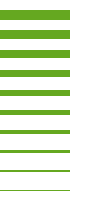https://doi.io-warnemuende.de/10.12754/msr-2015-0098
doi:10.12754/msr-2015-0098
© Author(s) 2015. This work is distributed
under

Dieses Werk ist lizenziert unter einer Creative Commons Namensnennung - Nicht kommerziell - Keine Bearbeitungen 4.0 International Lizenz.
Biological assessment of the Baltic Sea 2014
Abstract. Dating to 1979, the HELCOM time series on species composition, biomass and abundance of phyto- and zooplankton as well as macrozoobenthos from Kiel Bay to the Eastern Gotland Basin was continued in 2014. The phytoplankton spring bloom occurred in the Bay of Mecklenburg from 20.2. to 19.3.2014 and was met in the Arkona Basin in mid-March, dominated by Skeletonema marinoi. The appearance of Ceratium tripos in spring was surprising. The dominating species in May were Dictyocha speculum in the western Baltic and Mesodinium rubrum in the Arkona Basin. In summer, a diatom bloom occurred in the western Baltic, whereas no cyanobacteria bloom was observed there. The autumn bloom was not dominated by Ceratium tripos as is ususal, but by C. fusus instead. The presence of the marine species Noctiluca scintillans and Spatulodinium pseudonoctiluca indicates an inflow of North Sea water even before the Major Baltic Inflow of December 2014. The chlorophyll a concentrations were highest (10.35 mg m-3) during the spring bloom in the Arkona Basin in mid-March. The sedimentation of particulate organic matter in the Arkona Basin was low in spring 2014, but increased in the second half of the year due to the colonisation of the trap by barnacles. This unusually high colonisation can be explained by the inflows of North Sea water, rich in oxygen and larvae, in February and March 2014. The extremely high sedimentation rates of 3.0 mol C, 429 mmol N, 1.2 mol Si and 9.3 mmol P m-2 a-1 at a mass flux of 293 g dry mass m-2 a-1 do not reflect the true vertical transport of detrital material and can quantitatively not be compared with previous periods. The diversity in the diatoms and dinoflagellates remained in the same range as in the previous year. Zooplankton maxima were observed in summer 2014 in the Arkona and Bornholm Basins, caused mainly by Bosmina spp. and an unusual abundance of the copepods Temora longicornis and Centropages hamatus. Copepods and bivalve larvae dominated the zooplankton in the Bays of Kiel and Mecklenburg; Paracalanus parvus replaced Pseudocalanus spp. as the most abundant copepod species there. Polychaete larvae and Evadne nordmanni occurred earlier than usual; unlike previous years, rotifers were largely limited in their occurrence to the spring. The invasive species Evadne anonyx was previously known only in eastern areas of the Baltic Sea and was detected in Kiel Bay for the first time. The 117 species found in the macrozoobenthos mark a moderate diversity. Long-lasting oxygen deficiency caused the loss of biodiversity and abundance at two stations in the Bay of Mecklenburg. Depending on the region, the abundances ranged from 183 to 10.899 ind./m², and the biomass (ash free dry weight) from 1.7 g/m² to 75.2 g/m². The high number of species (24) and salinity (22.1 psu) in the central Arkona Arkona Basin indicate a saltwater inflow even before the Major Baltic Inflow of December 2014. At the 8 monitoring stations altogether 17 species of the Red List could be found. 4 indigenous species were observed during 2014.
